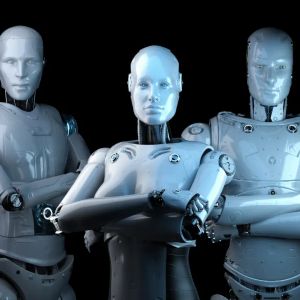Amazon deploys its one millionth robot, and it’s bad news for its human workers
3 min read
Amazon has now deployed its one-millionth warehouse robot and announced that every machine in its fleet will run on a new generative AI model. The move comes as many technology firms are trimming staff and warning that automation could replace human roles. Scott Dresser, vice president of Amazon Robotics, said in a press release on Monday that the milestone spread across more than 300 sites worldwide, underscores Amazon’s leadership in designing and operating mobile warehouse robots. Amazon is fully committed to automation By hitting the one-million mark, the company has confirmed its position at the forefront of robotics in logistics. Amazon also introduced a system called DeepFleet, which will direct how its robots move inside fulfillment centers. According to Dresser, DeepFleet cuts the machines’ travel distances by about 10%. He added that this change will help packages move more swiftly and lower the overall cost of deliveries. The company first began using robots in its warehouses back in 2012 to shift storage shelves around the floor. Over the years, their roles have expanded greatly. Today, some robots can lift up to 1,250 pounds of stock, and others navigate pick-and-pack aisles on their own, pulling carts loaded with customer orders. Factory workers are most vulnerable to AI automation Humanoid robots that are built to walk and work more like people could arrive later this year at Tesla’s factories. Despite these advances, there is growing worry about the impact on jobs. A Pew Research survey published in March found that both AI specialists and the general public view factory workers as among the most likely to lose employment to automation. Dresser sought to ease those concerns by pointing out that Amazon’s robots handle heavy lifting and routine chores, freeing up employees to learn new technical skills. He highlighted Amazon’s “next-generation fulfillment center” in Shreveport, Louisiana, which opened late last year and now employs 30% more workers in roles like reliability, maintenance and engineering. However, the announcement came shortly after Amazon CEO Andy Jassy said that rolling out generative AI will mean “fewer people doing some of the jobs that the technology actually starts to automate.” Jassy said the company would still hire in areas such as AI and robotics, but in a memo to staff in early June, he warned that overall headcount is likely to shrink in the years ahead as automation grows. Signs of that shift are already visible. Amazon cut over 27,000 jobs in 2022 and 2023, and continues to trim staff in various departments. Other tech leaders have voiced similar concerns. Shopify CEO Tobi Lutke wrote in a memo posted on X that employees must justify why they “cannot get what they want done using AI” before asking for more people or resources. He encouraged teams to imagine what this area would “look like if autonomous AI agents were already part of the team?” saying such ideas can spark “really fun discussions and projects.” Lutke also noted that AI has served as a “multiplier” of productivity for Shopify staff who have adopted it. This trend of automation-driven layoffs extends beyond a few companies. Layoffs.fyi, which tracks cuts in the tech industry, shows that 551 firms eliminated roughly 153,000 positions last year. Meanwhile, a World Economic Forum report released in February found that 48% of U.S. employers plan to reduce their workforces because of AI. Cryptopolitan Academy: Coming Soon – A New Way to Earn Passive Income with DeFi in 2025. Learn More

Source: Cryptopolitan



